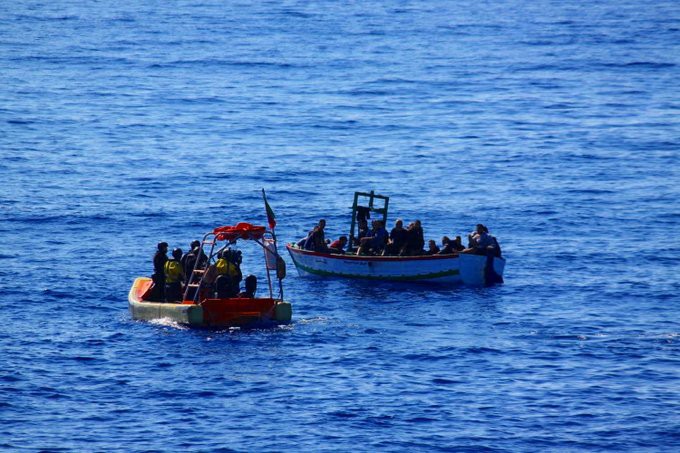In September, there were approximately 13 900 detections of
illegal border crossings on the four main migratory routes into the EU.
The total number of detections on the four main migratory
routes in the first nine months of 2017 fell by 64% from the same period of
last year to 156 000.
Central Mediterranean
In September, the number of migrants arriving in Italy
through the Central Mediterranean fell by more than two-thirds from the same
month of last year to 5 600. But the monthly figure in September was higher than
the total for the previous month because of more irregular migrants departing
Turkey, Tunisia and Algeria arrived in Italy.
The total number of arrivals for the first three quarters of
2017 stood at nearly 104 800, still down 21% from the same period of last year.
In fact, the third quarter of 2017 saw the lowest number of irregular migrants
in the Central Mediterranean for the July-September period since 2014.
The number of people claiming to be from the North African
countries, mainly Tunisia and Algeria, has risen in recent weeks, followed by
nationals of sub-Saharan countries – Nigeria, Ivory Coast and Guinea.
Western Mediterranean
The number of detections of illegal border crossings in the
Western Mediterranean in September by both sea and land reached an estimated 1
800, up more than a quarter from a year ago. In the first nine months of the
year, the number of irregular migrants reaching Spain stood at nearly 14 800, more
than double the figure from the same period of 2016.
Most of the migrants detected on this route this year have
come from Morocco, Ivory Coast and Algeria.
Eastern Mediterranean
The number of irregular migrants arriving in Greece in September
stood at 5 750, a fifth more than in the previous month. In the first three quarters
of this year, roughly 27 400 migrants reached Greece, down 84% from the same
period of 2016.
Syrians, Iraqis and Afghans accounted for the majority of
detections on the Eastern Mediterranean route in 2017.
Western Balkans
In September, the Western Balkan route saw a relatively low
number of detections of illegal border-crossings thanks to stronger cooperation
in border control among the countries in the region.
Note:
The data presented in
this statement refer to the number of detections of illegal border-crossing at
the external borders of the European Union. The same person may attempt to
cross the border illegally several times in different locations at the external
border.
